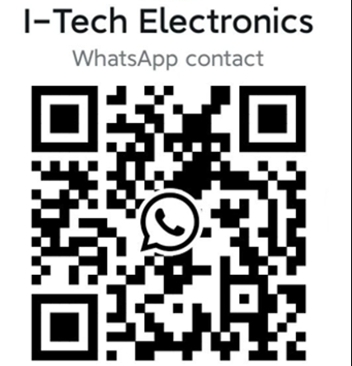The following are the professional terms used in the PCB manufacturing process, including both Chinese and English versions as well as their explanations:
- 印制电路板(Printed Circuit Board,PCB):又称印刷电路板,是电子科技中不可或缺的电子部件,用于支撑电子元件并实现电气连接。(Also known as a printed circuit board, it is an indispensable electronic component in electronic technology, used to support electronic components and achieve electrical connections.)
- 覆铜箔层压板(Copper - Clad Laminate,CCL):由绝缘基板和附着在其表面的铜箔组成,是制造PCB的基础材料。(Consists of an insulating substrate and copper foil attached to its surface, which is the basic material for manufacturing PCBs.)
材料相关
- 半固化片(Prepreg):由树脂和增强材料组成,在层压过程中起粘结和绝缘作用。(Consists of resin and reinforcing materials and plays a bonding and insulating role in the lamination process.)
- 铜箔(Copper Foil):用于形成PCB上的导电线路,具有良好的导电性和延展性。(Used to form the conductive lines on the PCB, with good electrical conductivity and ductility.)
- 玻璃纤维布(Glass Fiber Cloth):作为增强材料,提高覆铜板的机械强度和电气性能。(As a reinforcing material, it improves the mechanical strength and electrical properties of the copper - clad laminate.)
设计相关
- 布线(Routing):在PCB设计中,将电子元件的引脚通过导电线路连接起来,实现电路功能。(In PCB design, the pins of electronic components are connected by conductive lines to achieve circuit functions.)
- 间距(Clearance):指PCB上不同导电图形之间的最小距离,用于保证电气绝缘和防止短路。(Refers to the minimum distance between different conductive patterns on the PCB, used to ensure electrical insulation and prevent short - circuits.)
- 差分对(Differential Pair):由两根相互靠近、传输相反信号的导线组成,用于高速信号传输,能有效抑制电磁干扰。(Consists of two wires that are close to each other and transmit opposite signals, used for high - speed signal transmission and can effectively suppress electromagnetic interference.)
制造工艺相关
- 蚀刻(Etching):通过化学或物理方法去除覆铜板上不需要的铜箔,形成所需的导电线路。(The unwanted copper foil on the copper - clad laminate is removed by chemical or physical methods to form the required conductive lines.)
- 阻焊层(Solder Mask):是一种涂覆在PCB表面的绝缘涂层,用于防止焊接时焊料在不需要的地方附着,避免短路。(Is an insulating coating applied to the surface of the PCB to prevent the solder from adhering to unwanted areas during welding and avoid short - circuits.)
- 丝印层(Silkscreen):用于在PCB表面印刷字符、图形等标识,方便安装和维修。(Used to print characters, graphics and other markings on the surface of the PCB to facilitate installation and maintenance.)
- 钻孔(Drilling):在PCB上钻出各种安装孔和过孔,用于安装电子元件和实现不同层之间的电气连接。(Drill various mounting holes and vias on the PCB for installing electronic components and achieving electrical connections between different layers.)
- 层压(Lamination):将多张半固化片和铜箔通过高温高压粘合在一起,形成多层PCB。(Multiple prepregs and copper foils are bonded together by high temperature and high pressure to form a multilayer PCB.)
检测与测试相关
- 绝缘电阻测试(Insulation Resistance Test):测量PCB上不同导电部分之间的绝缘电阻,以确保电气绝缘性能良好。(Measure the insulation resistance between different conductive parts on the PCB to ensure good electrical insulation performance.)
- 耐压测试(Dielectric Withstand Voltage Test):对PCB施加一定的电压,检测其在高压下的绝缘性能,防止发生击穿现象。(Apply a certain voltage to the PCB to test its insulation performance under high voltage and prevent breakdown.)
- 功能测试(Functional Test):对PCB组装完成后的电路进行测试,检查其是否满足设计的功能要求。(Test the circuit after the PCB is assembled to check whether it meets the designed functional requirements.)
Others
- 加成法(Additive Process):一种PCB制造方法,通过在绝缘基板上直接添加导电材料来形成电路,相比传统减成法更环保、精度更高。(A PCB manufacturing method that forms circuits by directly adding conductive materials to the insulating substrate. It is more environmentally friendly and has higher accuracy than the traditional subtractive process.)
- 减成法(Subtractive Process):是常见的PCB制造方法,先在覆铜板上涂覆抗蚀剂,然后通过蚀刻去除不需要的铜箔,形成电路。(Is a common PCB manufacturing method. First, apply an etch - resist on the copper - clad laminate, and then remove the unwanted copper foil by etching to form the circuit.)
- 多层板(Multilayer Board):由两层以上的导电层和绝缘层交替堆叠。(Consists of two or more conductive layers and insulating layers stacked alternately.)


